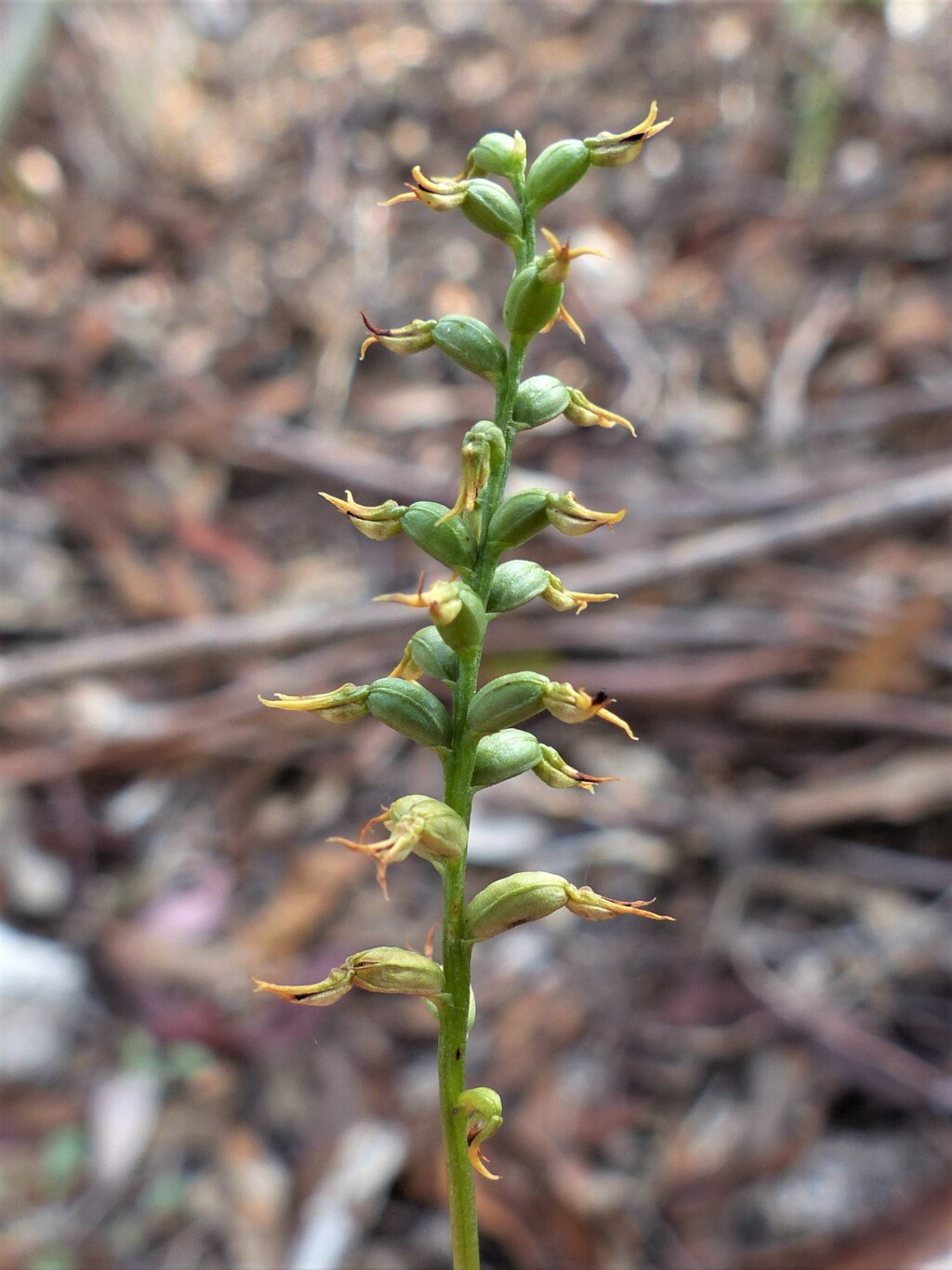Corunastylis clivicola
D.L.JonesFlowering plants 8–25 cm tall. Leaf lamina appressed to the peduncle below the lowest flower. Inflorescence 1–4 cm long, moderately crowded. Flowers 1–25, greenish and light red to dark red or purplish, 3–4 mm across, porrect; perianth segments spreading widely; dorsal sepal obovate, 3.5–4 mm long, c. 2.5 mm wide, apex acuminate, margins entire; lateral sepals divergent, linear-lanceolate, 4.5–5 mm long, c. 1–1.5 mm wide, pouched at the base; petals ovate, 2.5–2.8 mm long, c. 1.2 mm wide, apex acute to acuminate, margins entire or erose. Labellum obovate, 2.4–2.8 mm long, c. 1.2 mm wide, margins entire, apex shortly acuminate; callus narrowly ovate to narrowly oblong, extending nearly to the labellum apex. Column wings minutely denticulate. Flowers Jan.-May.
LoM, Wim, VVP, VRiv, GipP, Gold, CVU, GGr, NIS. Scattered north of the Dividing Range from the South Australian border to near Albury, with an isolated occurrence in the Brisbane Ranges. Occurs in dry open forests, heathy forests and woodlands.
Previously confused with C. tepperi (which can be readily distinguished by its crowded inflorescence of green flowers with a dark reddish black labellum) and C. rufa which is now understood to be confined to central coastal New South Wales (Copeland and Backhouse 2022). The identity of Victorian plants is not fully resolved. According to Backhouse (2023), in Victoria C. clivicola s.s. is known only from photographic records from ranges in north-eastern Victoria, while the widespread plants from lower elevations represent another species, which was recognised by Jones (2021) and Backhouse (2023) under the invalid name Corunastylis occidua.
Backhouse, G.N. (2023). Guide to native orchids of Victoria. CSIRO Publishing. Clayton South.
Copeland, L.M. & Backhouse, G.N. (2022). Guide to native orchids of NSW and ACT. CSIRO Publishing. Clayton South.
Jones, D.L. (2021). A complete guide to native orchids of Australia (3rd edn). Reed New Holland Publishers, Sydney.
 Spinning
Spinning

